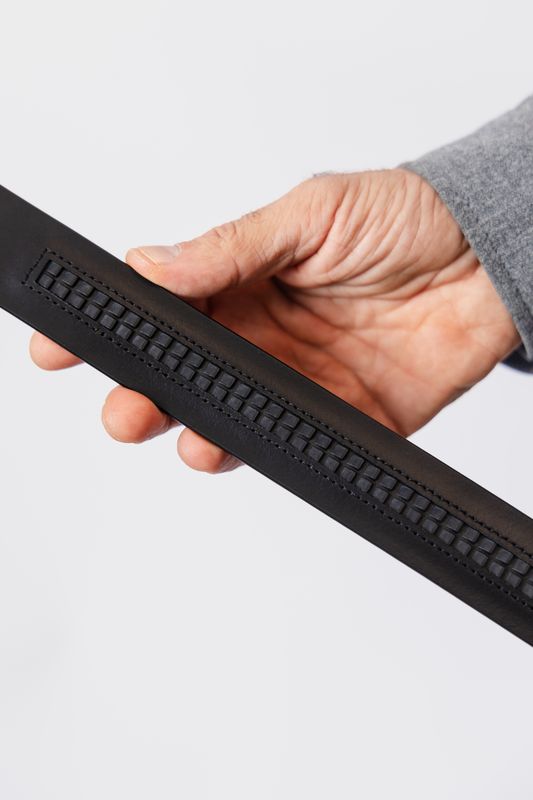No products in the cart.

The mathematics of imperfection
Every traditional belt tells the same story of limitation. Five holes, maybe seven if you’re fortunate. Each one exactly an inch apart. Your body, meanwhile, exists in millimeters, fluctuates by the hour, changes with the season. Yet we’ve accepted this mismatch as inevitable, this daily negotiation between too tight and too loose.
At Burralli, we questioned this acceptance. Why should comfort be confined to predetermined positions? Why should a premium accessory broadcast your exact waist measurement through worn holes? Why should elegance be compromised by mechanical limitations designed in the medieval period?
The automatic belt isn’t innovation for its own sake. It’s the resolution of tensions that have existed as long as belts themselves.

Beyond the five-hole compromise
Consider the arithmetic of traditional belts. Five holes, one inch apart. Your perfect fit exists somewhere between holes two and three. So you choose. Hole two leaves you aware of your belt all day, a constant pressure that divides your attention. Hole three feels acceptable until you sit, until you eat, until late afternoon when somehow it’s no longer sufficient.
This isn’t a minor inconvenience. It’s a fundamental design flaw that we’ve normalized through repetition. The human body doesn’t exist in inch-wide increments. It expands and contracts throughout the day in subtle variations. After coffee, after lunch, during long meetings, on flights. These changes are natural, constant, and completely ignored by traditional belt design.
The Burralli automatic system offers thirty-eight adjustment positions within the same span that a traditional belt offers five. That’s not improvement — it’s reimagination. It’s recognition that precision matters, that comfort isn’t optional, that the difference between perfect and acceptable is worth pursuing.
The archaeology of wear
A traditional belt becomes a document of your body’s history. The most-used hole stretches, darkens, eventually tears. The leather around it weakens, cracks, fails. Anyone who glances at your belt can read this history, can identify your usual setting, can see where leather has surrendered to metal.
This degradation isn’t graceful aging — it’s structural failure. Each time the prong pushes through leather, it damages fibers that can never recover. The hole that started precise becomes elongated, sloppy, unable to maintain position. What begins as a small perforation becomes a weakness that spreads through the entire piece.
With Burralli’s automatic mechanism, the leather strap remains unperforated, uncompromised. No holes means no weak points. No prong means no repeated trauma. The strap ages as leather should — developing patina, gaining character, growing more beautiful. Not deteriorating around predetermined failure points but evolving as a complete, intact piece.




Leave a Reply